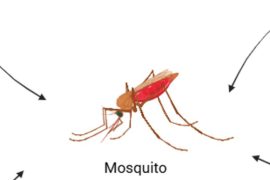The findings from the Lancet study paint a stark picture of the global obesity crisis, surpassing earlier predictions and highlighting its disproportionate impact on poorer countries and younger populations. The fact that the number of obese individuals has surpassed one billion is alarming, especially considering it has more than quadrupled since 1990. This acceleration underscores the urgent need for comprehensive strategies to address this epidemic on a global scale.
The study’s revelation that obesity rates are escalating faster among children and adolescents than adults is particularly concerning, as it indicates long-term health implications and underscores the importance of early intervention and prevention efforts. Francesco Branca’s observation that the milestone of surpassing one billion people with obesity has arrived earlier than anticipated underscores the gravity of the situation and the need for swift action.
The methodology employed in the study, analyzing weight and height measurements of millions of individuals across nearly 200 countries, provides a comprehensive and robust assessment of the global obesity burden. The staggering figures—504 million adult women and 374 million men estimated to be obese in 2022—underscore the scale of the challenge facing public health systems worldwide.
Moving forward, addressing the root causes of obesity—such as unhealthy diets, sedentary lifestyles, and socioeconomic factors—is paramount. Multifaceted approaches involving governments, healthcare providers, educators, and communities will be essential to curb the obesity epidemic and promote healthier lifestyles for future generations.
The revelation that 159 million children and adolescents were living with obesity in 2022, a significant increase from about 31 million in 1990, underscores the critical need for targeted interventions in younger populations. The study’s findings also emphasize the long-term health risks associated with obesity, including a higher risk of death from heart disease, diabetes, certain cancers, and even an increased risk of mortality during the coronavirus pandemic.
The geographical distribution of obesity, with higher rates in countries in Polynesia and Micronesia, the Caribbean, the Middle East, and North Africa, challenges previous perceptions that obesity is primarily a problem in high-income industrialized countries. The study suggests that these regions now have higher obesity rates than many wealthier nations in Europe. This shift highlights the global nature of the obesity epidemic and the impact of fast lifestyle changes in low and middle-income countries.
The study notes a potential leveling out of obesity rates in some southern European countries like France and Spain, particularly among women. However, the overall trend indicates that more people worldwide are suffering from obesity than being underweight, a reversal from trends seen since 1990.
The role of diet and lifestyle in the obesity epidemic is emphasized, with the study pointing out that the “very rapid transformation of food systems is not for the better.” The call for preventive measures from early life to adulthood through diet, physical activity, and proper care aligns with public health strategies aimed at addressing the root causes of obesity.
WHO Director-General Tedros Adhanom Ghebreyesus highlights the need for cooperation from the private sector, emphasizing their accountability for the health impacts of their products. The WHO’s support for measures such as taxes on sugary drinks, limitations on marketing unhealthy foods to children, and subsidies for healthy foods reflects a comprehensive approach to tackle the obesity epidemic.
The mention of new treatments against diabetes as potential tools against obesity underscores the interconnected nature of these health issues. However, the study emphasizes that these drugs are not a complete solution, and their long-term effects and side effects need careful consideration.
In conclusion, the study’s findings underscore the urgency of global collaboration and comprehensive strategies to address the multifaceted challenges posed by the obesity epidemic, particularly among children and adolescents.
Disclaimer:
The information contained in this article is for educational and informational purposes only and is not intended as a health advice. We would ask you to consult a qualified professional or medical expert to gain additional knowledge before you choose to consume any product or perform any exercise.








